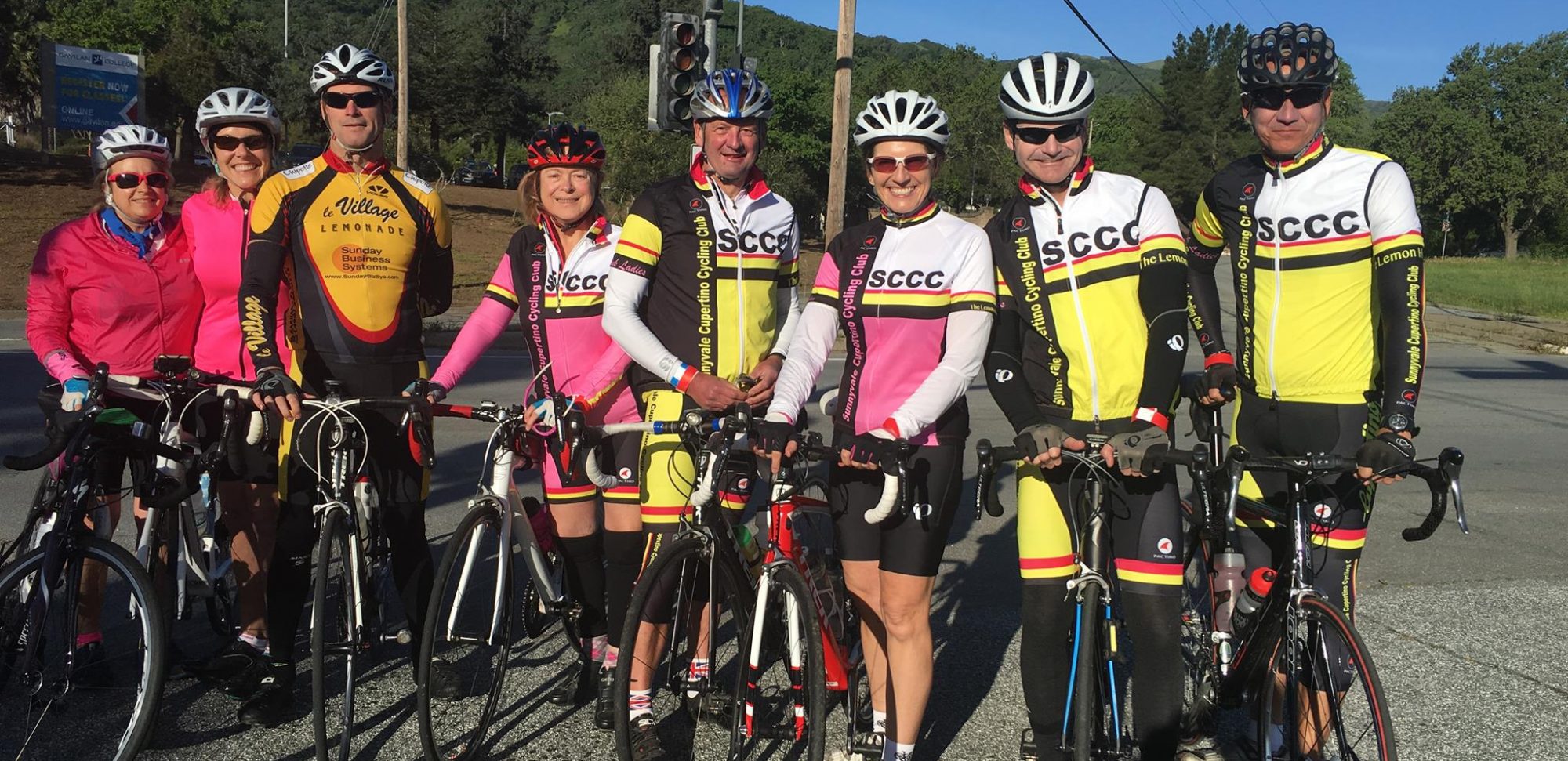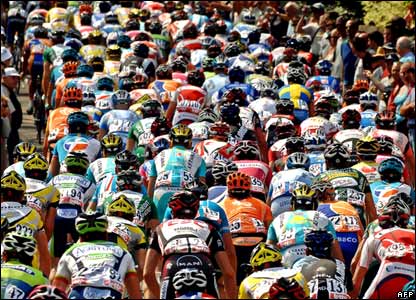Ride Etiquette/Expectations on the Road
Thanks to Alto Velo Racing Club and Pen Velo Racing for a lot of this content!
General
Much of the tension between cyclists and drivers arises from the perception that cyclists think they don’t have to follow the same rules as drivers. Although at times it may seem that there should be different rules for cyclists, there currently aren’t (except the CA law which requires drivers to give cyclists a three foot berth when passing — don’t expect that to happen) and if we want to reduce the angst and potential incidents with cars, we need to obey the laws.
Objectives
- Improve safety for cyclists on the road.
- Improve our relations with car drivers, motorcyclists, pedestrians, equestrians, and other cyclists.
- Improve the reputation and brand of SCCC.
Best practices on club rides
Prime objective: We all finish without touching the pavement and aggravating our neighbors. Beyond all else, safety comes first.
- Helmets are mandatory. (The eighties are over.)
- When stopping at stop signs or lights, wait for the entire group to get back on before proceeding. This is expected behavior on club rides. Similarly, if you have been gapped off the group, don’t roll through the stop sign/light to catch up to the group. Come to a stop, then proceed.
- Many of us still enjoy testing each other on the climbs. However, upon reaching a “summit” of any significance, please rest, shoot the breeze, and let everyone catch up. That’s how we roll. We also have a (poorly enforced) club rule that the KOM must proceed back down the hill until they encounter the last rider and accompany them back to the top.
- If you leave a ride early, notify someone so the group doesn’t think they lost you.
- Protect your front wheel, do not cross wheels.
- Do not make sudden lateral movements at any time.
- Be gentle on brakes so as not to suddenly stop in front of someone.
- No aero bars.
- When going through quiet neighborhoods with many pedestrians or equestrians, slow down.
- Speak up when cyclists are behaving inappropriately and give constructive corrective feedback.
- Be communicative about potential road hazards.
- Communicate clearly to cyclists behind when stopping, slowing, or turning.
- Let slower cyclists ahead know that a group is approaching and give them plenty of space as you pass.
- Have good lights on your bike if you are going to be out after sundown. Put one on the front and one on the back of your bike. While not required by law, you can increase your daytime visibility by using lights.
- When coming to a stop light, line up behind the car in front of you if there is no bike lane (especially when making a left turn).
- Do not tailgate cars on descents or pass illegally or in a reckless manner.
- Remember, cyclists who are following the laws are often victims of collisions involving cars; ride defensively all the time.
- Always be aware of your surroundings and give yourself an “out” in case of emergency.
- Anticipate problems by being super observant of driver behaviors.
- Ride in a deliberate and predictable manner.
- Make eye contact with and communicate with drivers about your intended direction.
- Gesture kindly to drivers when they wave you on or when they are considerate to you.
- Stay as far right on the road as you safely can, especially when you know that a car is coming up behind you — let other cyclists know that there is a car approaching.
- Even if a driver does something that you do not appreciate, avoid the urge to retaliate in any way. If you do, it not only reflects badly on SCCC (especially if you’re wearing our flash kit), it reflects badly on the entire cycling community and inspires drivers to be more aggressive with cyclists in the future. If they do something that you feel needs to be reported, take down their license plate number and a description of the car/driver and call it in to the authorities.
- When in a group, be sure to alert slower cyclists that a group is approaching from behind and give them plenty of space when passing.
- When in a group, point to and/or call out road hazards to cyclists following you.
- Signal when turning, slowing and stopping.
- When you have a mechanical during a group ride, let the other riders know. We don’t let riders deal with mechanicals on their own in SCCC. Stop and offer to help someone who has had an accident or a mechanical problem.
- Horse-drawn vehicles and riders of horses or other animals are entitled to share the road with you. Slow down or stop, if necessary, or when requested to do so by horse riders or herders.
What California Law Says
- Obey all laws that apply to a vehicle on the road — CVC 21200.
- Come to a complete stop at all stop signs — CVC 22450(a). We’ve had a few of our fellow SCCC club members go afoul of the police on this one and, trust us, it gets expensive.
- Stop at all red lights — CVC 21453.
- Stay as far to the right of the roadway as practicable when traveling slower than the normal flow of traffic — CVC 21202(a).
- Yield to other vehicles when indicated.
- Signal when turning — CVC 22107.
- It is a traffic offense to scare horses or stampede livestock — CVC 21759.
What the California driver handbook Says
Bicyclists:
- Are entitled to share the road with motor vehicles.
- Have the same rights and responsibilities as vehicle and motorcycle drivers.
- Must obey all traffic signals and stop signs.
- Are lawfully permitted to ride on certain sections of roadway in rural areas where there is no alternate route.
- Must ride in the same direction as other traffic, not against it.
- Shall ride as near to the right curb or edge of the roadway as practical — not on the sidewalk.
- Are legally allowed to ride in the center of the lane when moving at the same speed as other traffic.
- May move left to pass a parked or moving vehicle, bicycle, animal, or avoid debris or other hazards.
- May choose to ride near the left curb or edge of a one-way street.
- Should ride single file on a busy or narrow street.
- Must make left and right turns in the same way drivers do, using the same turn lanes. If the bicyclist is traveling straight ahead, he or she should use a through traffic lane rather than ride next to the curb and block traffic making right turns.
- Must signal all their intentions to motorists and bicyclists near them.
- Must wear a helmet if under the age of 18.
- Should carry identification.
- Shall not operate a bicycle on a roadway unless the bicycle is equipped with a brake which will enable the operator to make one braked wheel skid on dry, level, clean pavement. (For you fixie riders out there, which, by the way, are not allowed on SCCC group rides.)
- During darkness, bicyclists must have the following equipment:
- A front lamp emitting a white light visible from a distance of 300 feet.
- A rear red reflector visible from a distance of 500 feet.
- A white or yellow reflector on each pedal or on the bicyclist’s shoes or ankles visible from a distance of 200 feet.

